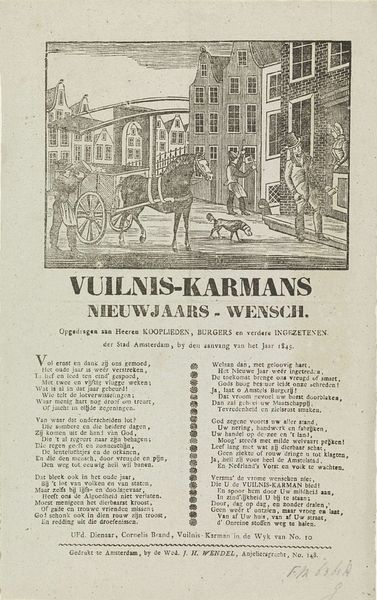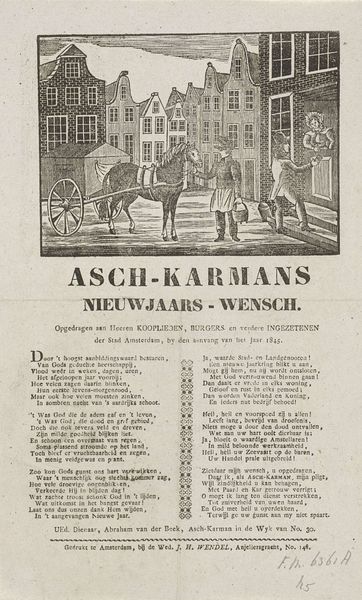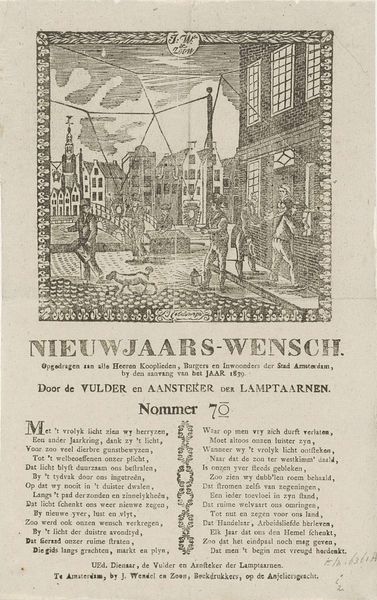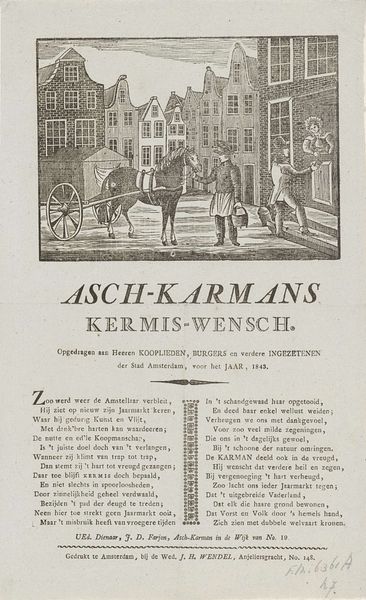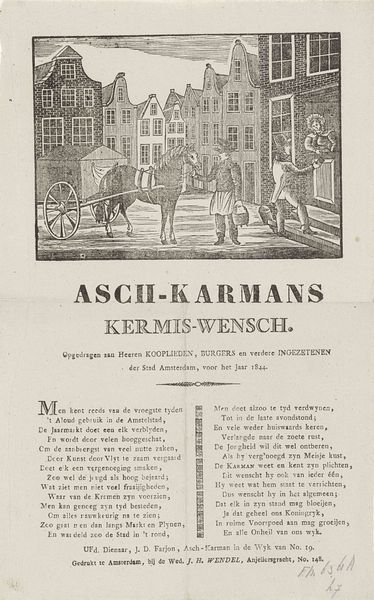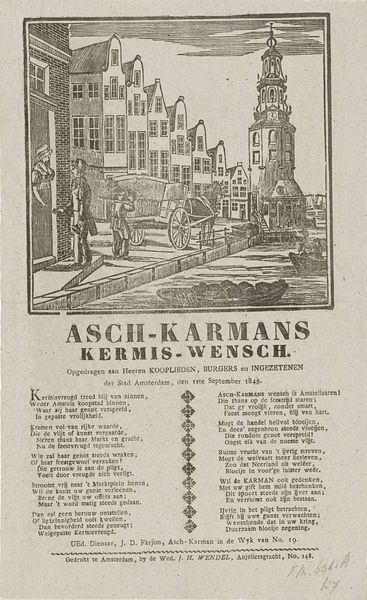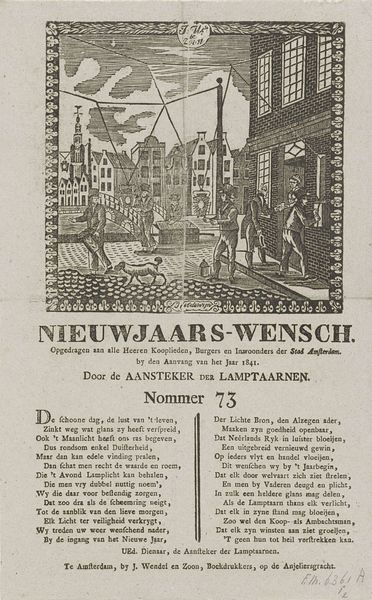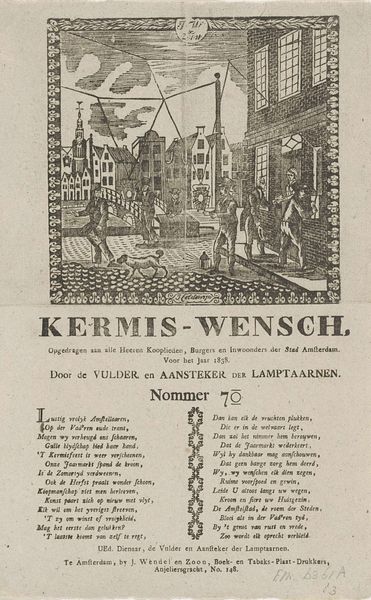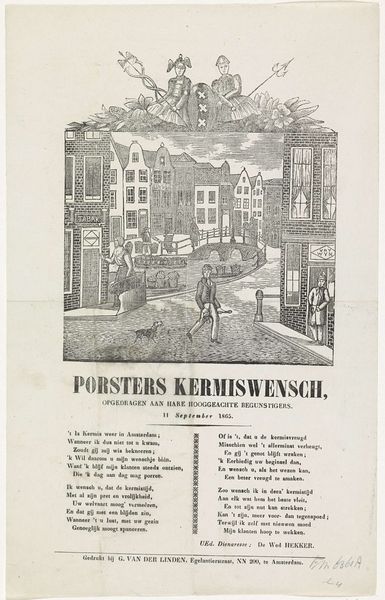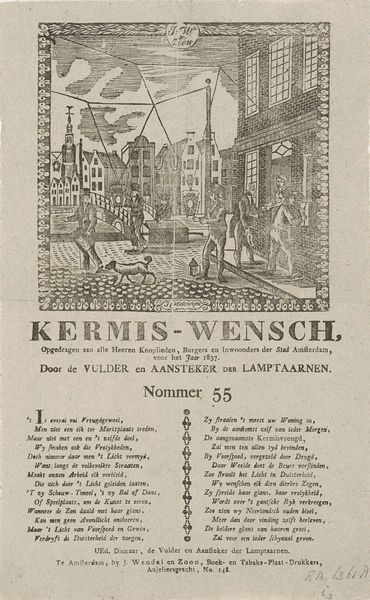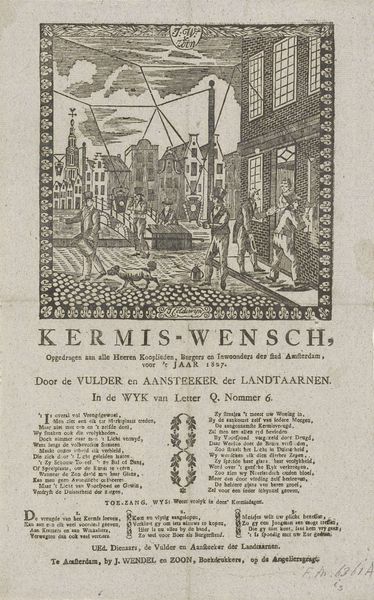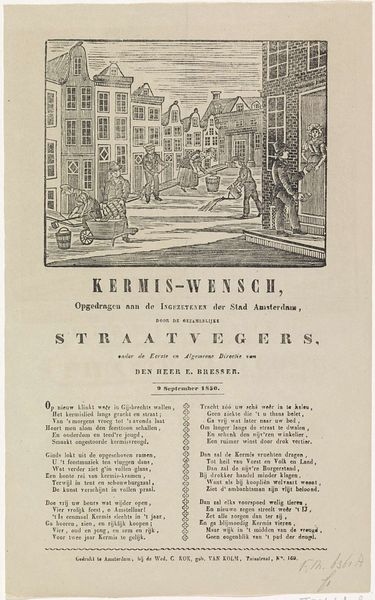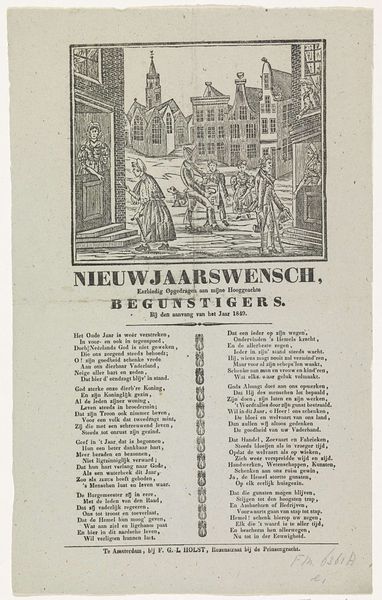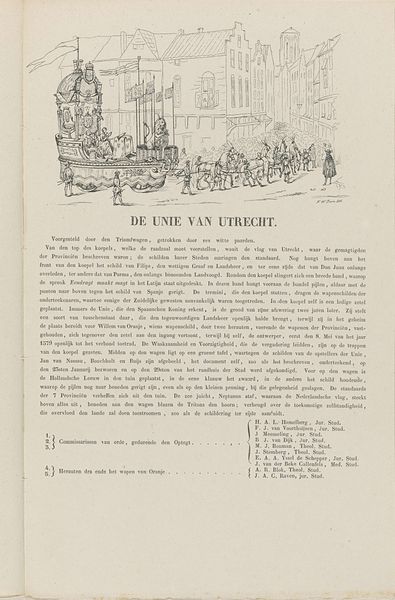
Nieuwjaarswens van de vuilnismannen van Amsterdam voor het jaar 1844 1843 - 1844
0:00
0:00
anonymous
Rijksmuseum
print, engraving
#
dutch-golden-age
# print
#
old engraving style
#
cityscape
#
genre-painting
#
street
#
engraving
Dimensions: height 338 mm, width 210 mm
Copyright: Rijks Museum: Open Domain
Curator: This is an engraving titled "Nieuwjaarswens van de vuilnismannen van Amsterdam voor het jaar 1844," essentially "New Year's wish from the Amsterdam garbage collectors for the year 1844." Editor: It has a dark, gritty feel to it. The lines are very defined. The cityscape, though, gives a quaint vibe—makes me think about public services in the context of class and community. Curator: Indeed. The print, created sometime between 1843 and 1844 by an anonymous artist, depicts precisely that. Notice how the supposed "common workers" are the ones offering their best wishes to the citizens. The act itself becomes a potent symbol. Editor: It flips the power dynamic, doesn’t it? These workers, who are usually overlooked, are elevated to a position of cultural importance. Their "wish" isn't just a pleasantry; it’s a reminder of their vital role in the city's well-being. What an unexpected genre-painting scene with political undertones! Curator: And that ties to symbolic purification – of cleaning up the mess of the old year, both literally and figuratively, which extends back to ancient cleansing rituals from well beyond Dutch culture. Their presence reinforces the idea of starting anew, cleansed and hopeful, a tradition deeply rooted in our cultural memory. The image of their humble yet necessary work stands for order. Editor: But who are they really addressing? Is this genuine goodwill, or does it mask a plea for better treatment? It could point to the uneven power dynamics that allow the upper class to dictate work conditions to those very sanitation workers who serve them, especially with the text dedicated "to the Merchants, Citizens and other Residents of the City of Amsterdam." Curator: Possibly a bit of both. There’s the social commentary, layered within conventional iconography. Think of the garbage cart and the way it frames their profession - as the bearer of symbolic as well as material waste. Even the dog, a frequent companion in cityscapes, perhaps offers some indication of "domestic" issues. Editor: Interesting points. It's fascinating how one scene combines New Year's greetings and workers’ conditions. Next time, let's research more of these prints and uncover the hidden voices of common labourers in society. Curator: A brilliant idea. There’s much more than meets the eye, which offers so many avenues of cultural and visual examination.
Comments
No comments
Be the first to comment and join the conversation on the ultimate creative platform.
